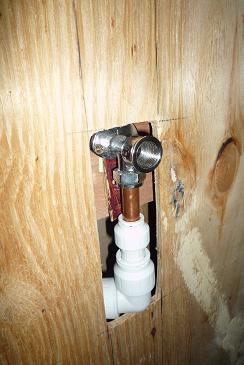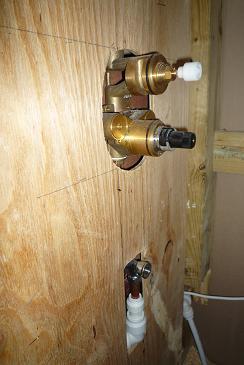Any opinions on this - the pipework is proud of the plywood, and will still be sticking out after the backing board is on - only the tile adhesive will give enough clearance for the tile to go over it.
Are there any issues with this, other than not looking the most beautiful setup in the world? Will it cause any problems down the line?
Thanks.
P.S. I added some pictures to an album - not sure how to make them show up
added by Mod10:
Are there any issues with this, other than not looking the most beautiful setup in the world? Will it cause any problems down the line?
Thanks.
P.S. I added some pictures to an album - not sure how to make them show up
added by Mod10:



